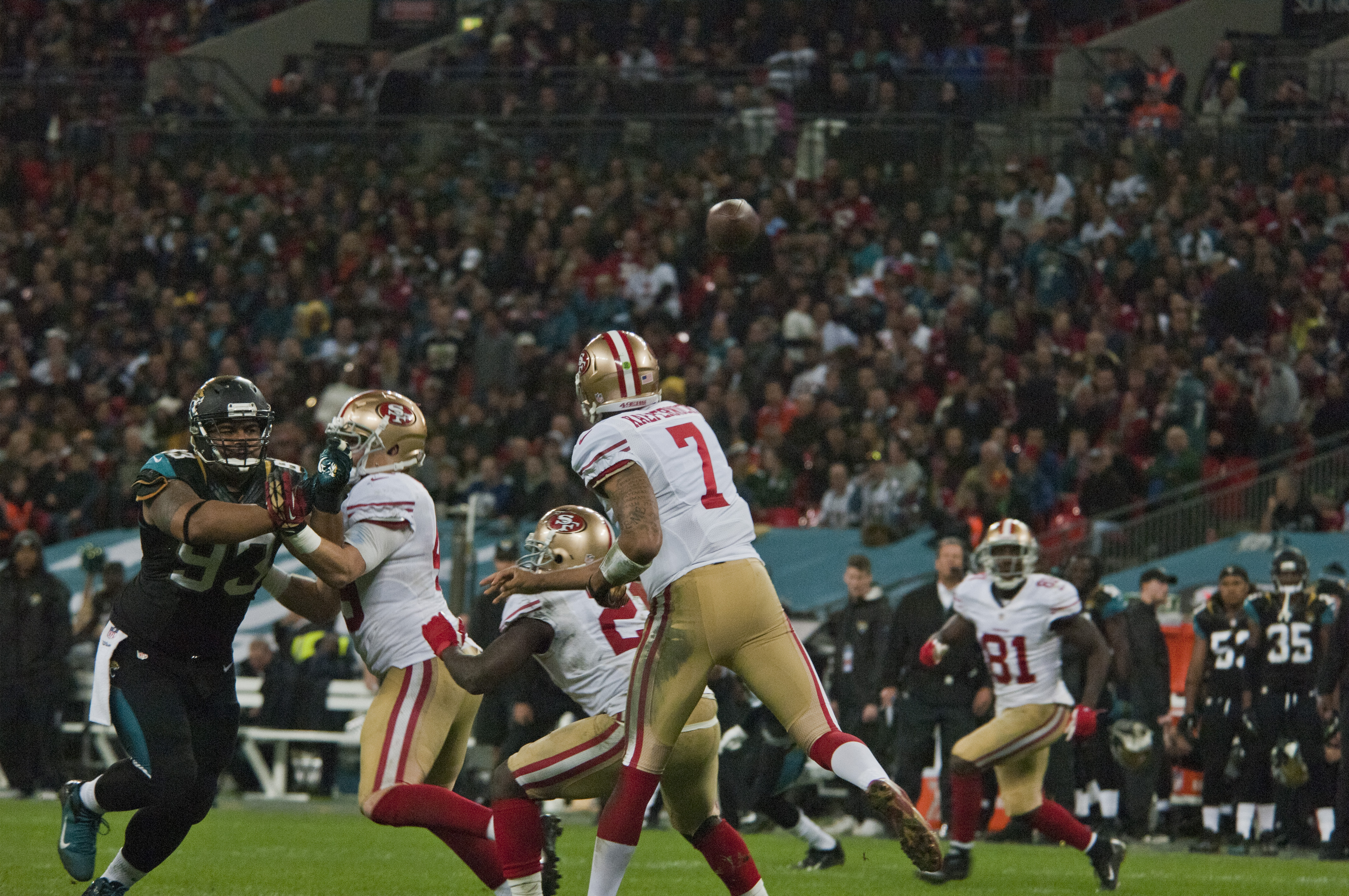Views expressed in opinion columns are the author’s own.
If there’s one thing Americans know, it’s football. From the billions of dollars spent on player salaries, to the thriving collegiate level and the cultural fascination surrounding Super Bowl commercials, many Americans make football a cornerstone of their lives. And, as with any sport, fans are die-hard partisans for “their” teams. It’s no surprise, then, that the current wave of kneeling protests has elicited sharply divergent opinions — opinions that largely boil down to “Yes, it’s OK to kneel during the national anthem” or “No, it’s not.”
This polarization is a defining feature of American politics on the whole. In a nation whose citizens have a broad spectrum of beliefs, political affiliations and media commentary distinguish between groups through broad generalizations. Many people can relate on a personal level to this tendency to simplify our political and moral beliefs. Those on the center-left don’t want to be lumped in with groups like antifa, and moderate conservatives resist association with the alt-right. Yet, we often polarize ourselves. The recent football controversy has brought self-polarization into our living rooms.
If your Facebook feed looks anything like mine lately, there is a slew of videos defending the right to kneel scattered between posts about supporting and respecting our troops. I’ve seen freedom of speech cited and words like “ingrate” accompanying posts with thinly veiled racist undertones.
On the whole, the movement has caused Americans across the nation to self-polarize, and what feels like an unnecessary argument over free speech and respect has drawn President Trump into the mix. His tweets include, “The NFL has all sorts of rules and regulations. The only way out for them is to set a rule that you can’t kneel during our National Anthem!” and “Tremendous backlash against the NFL and its players for disrespect of our Country. #StandForOurAnthem.” It’s clear where our president currently falls on this particular issue.
These recent statements, however, contrast a tweet from Jan. 22, in which Trump stated, “Peaceful protests are a hallmark of our democracy. Even if I don’t always agree, I recognize the rights of people to express their views.” Now, this could easily be written off in a number of ways. Maybe Trump is a hypocrite. Maybe he doesn’t realize he’s contradicted himself. Maybe he’s even changed his opinion on peaceful protests altogether. Or, we are presented with a more alarming option: Trump is purposefully doubling back on his previous statement in an effort to play the polarization game.
After all, hasn’t that been his game from the beginning? During election season, it was Hillary Clinton; for a while, it was the infamous potential wall between the U.S. and Mexico; and now he’s found the next polarizing issue he knows will win him brownie points once he declares his side. This isn’t a new phenomenon, and it doesn’t even mean Trump buys the nonsense he spews — he’s just playing politics.
This kneeling debacle has illustrated an important facet of the American political climate: In a nation teeming with diversity, we have managed to effectively separate ourselves into two warring factions, to the point where there’s virtually no in-between. What’s even worse is we’re letting manipulative, 140-character snippets that hardly count as fully articulated thoughts play us for fools. By letting social media statements incite us with rage or elevate us with nationalistic pride, we play right into the polarization Trump wants and expects.
Caitlin McCann is a sophomore communication major. She can be reached at caitlinmccann32@gmail.com.



